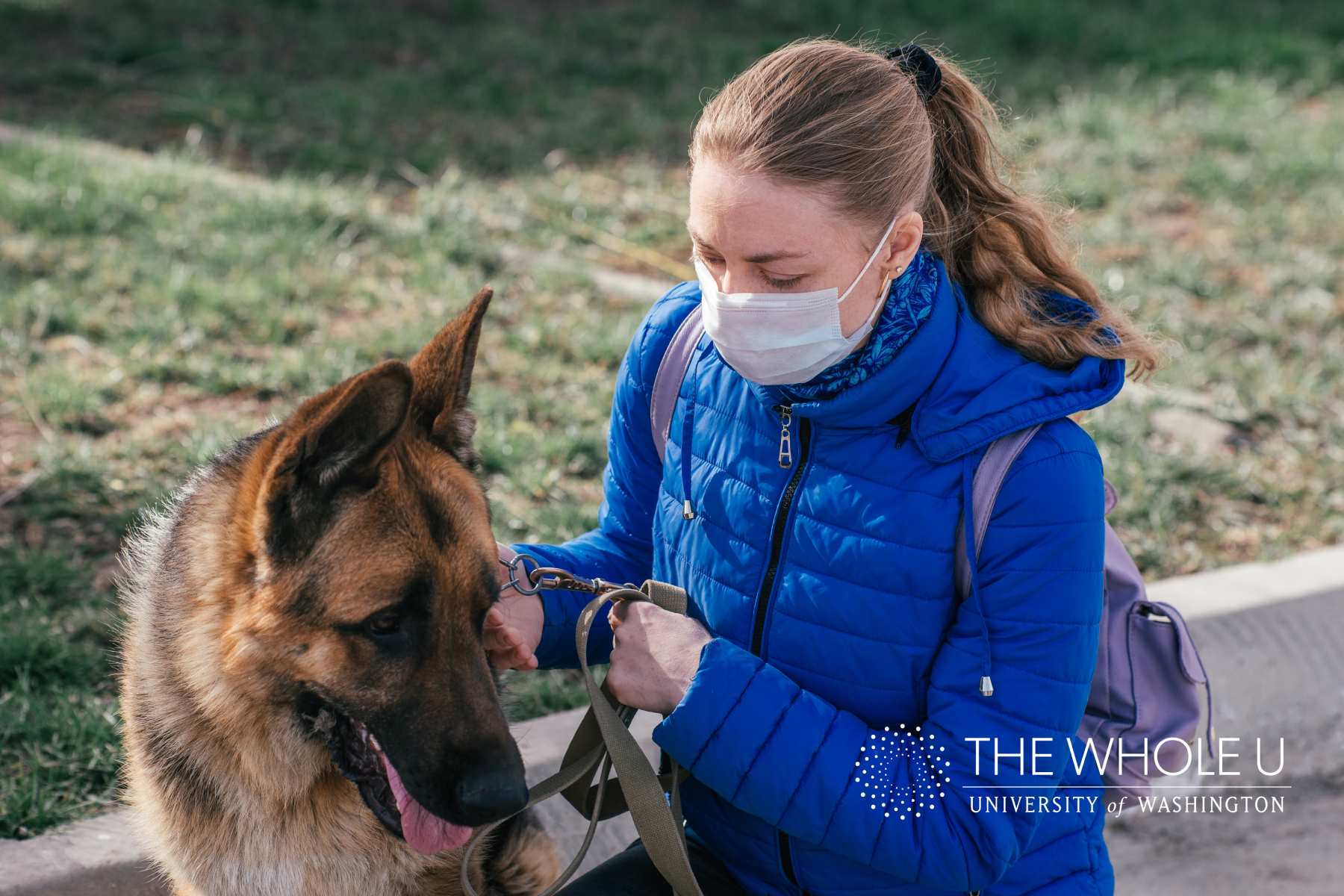
Caring for Your Pandemic Pet When You Return to Work
Most employees whose jobs did not require them to work onsite during the pandemic have been working from home. This shift from being at a work location to veritably being home 24 hours a day has not only had an impact on ourselves, it’s also had an impact on our pets and the level of interaction and human contact that they have come to expect. With many UW employees preparing to return to onsite work, our pets have another transition in store.
Cohabitating with two furry roommates of my own while living mostly in isolation during the pandemic has caused me to start considering how to best transition us all back to being used to having me out of the house for long stretches of time, and I’m not alone. Anxiety about leaving our pets at home once we return to working onsite has been a trending topic on social media, and many people are apprehensive about how to make the change. A 2021 survey conducted by PetCo showed that up to 69% of pet owners are nervous about how returning to the workplace will affect their pets, and news outlets from Time to NPR have reported on the woes facing pet owners as they prepare to return onsite.
Establish a Routine
To help pet owners better understand how to ease their animals (and ourselves) into getting used to more separation, I spoke with Dr. James Ha, certified applied animal behaviorist and UW emeritus research professor of psychology in the Animal Behavior Program. To help dogs and cats cope with the inevitable return to onsite work, Dr. Ha strongly suggests maintaining or re-establishing your normal morning routine that you had with your pet when you used to commute to work, pre-pandemic. It’s important to maintain consistency, and to establish rituals that will help your pet know what to expect each time you leave home. For owners with pets that were introduced to their households amid the pandemic, it is especially critical to begin creating these kinds of routines to help normalize upcoming extended separation.
“I want to encourage you to leave the house without your dog,” said Ha. “I want to encourage you to give the dog time at home. Do your morning routine exactly like you used to do for work. If you give a treat, if you leave your pet crated, if you don’t leave them crated – do things exactly like you’re leaving for work.” Reinforcing or creating these kinds of habits as soon as you can will help the eventual separation of 8+ hours feel more tolerable, as your pet will have the opportunity to practice and build up more time apart gradually. “Make sure your dog stays used to having you depart, and be gone for a while,” suggests Ha.
Practice Separation Time From Your Pets
Our pets, especially dogs, become attached to us rapidly. “The issue is this: our dogs tend to very easily develop strong attachments to their pack, their owners, their handlers,” says Ha. If you haven’t yet been practicing separation time from your pets – especially a new pet you may have welcomed during the pandemic who was never used to separation – now is a good time to start. In addition to establishing your preferred routine for your pet when preparing to leave the house, it is also beneficial to provide your canine and feline companions with positive reinforcement such as extra creature comforts that you know alleviate stress.
If your cat has a favorite treat or catnip toy, try and spend more time with them while providing access to these things; if your dog has a favorite dog park, try and take them there as a reward as you begin implementing your separation anxiety reducing strategies.
Get Help if Needed
“Everybody’s going to need some self-care through this time. Keep your tired and stressed companions in mind; think about whether some exercise with you would be helpful, or maybe just some cuddling in a big couch pile… or both!” If your pet begins exhibiting extreme symptoms or reactions to your absence, seek professional guidance rather than trying to manage things alone. If your pet is experiencing severe separation anxiety, Dr. Ha advises getting help from an animal behaviorist and your veterinarian, and to be aware they may recommend medication to support your pet while they adapt to change.
While there is no immediate overnight solution to making the transition to being away from our pets for long stretches of time after such a long and sustained period of working from home, with a little care and advance planning, most pets should be able to make the transition without any major hurdles. The earlier you start practicing, the smoother the shift will be. “As you are adjusting, so are your pets. I hope people think about leaving their pets at home for some breaks. It just makes life a little bit easier later, as the world begins to return to normal.”
Benefits eligible UW employees receive access to pet care options through Sittercity, one of our UW benefits offered through Bright Horizons. More information on this, including other benefits offered through Bright Horizons, can be found here.
Professor Emeritus James Ha is teaching an upcoming certificate course this fall on Applied Animal Behavior through the UW Continuum College. More information on this course can be found here.
One Thought on “Caring for Your Pandemic Pet When You Return to Work”
On August 4, 2021 at 10:58 AM, Bettina said:
I have two dogs and I’ve started crating them a few hours a day to begin to prepare them for when I’m out of the house for a full day’s work. I plan on slowly increasing the time. I also play music for them while they’re crated.
Comments are closed.